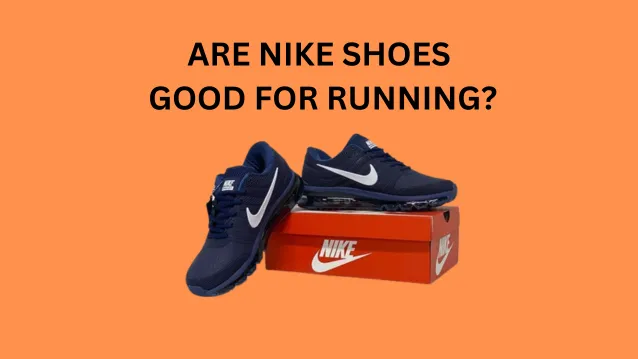With their iconic Swoosh logo, Nike shoes are one of the most popular choices for runners. But are they actually good running shoes? In this comprehensive guide, we’ll explore the key things to consider when evaluating Nike running shoes.
Nike’s Breadth of Running Shoes
One major advantage of Nike is the wide variety of running shoes they offer. This includes shoes specifically designed for:
- Road running
- Trail/off-road running
- Racing/competition
- Different runner needs – stability, cushioning, support, etc.
So no matter your running surface or goals, Nike likely offers shoes to match. This variety stems from Nike’s position as a leader in running shoe technology and innovation.
Key Technologies
Nike integrates several key technologies across many of their shoes to promote responsiveness, cushioning, and energy return:
Flyknit Uppers: Flyknit fabric molds to your foot for a snug, supportive fit that stretches only where needed. This creates a sock-like feel many runners love.
React Foam: Their proprietary midsole foam that aims to be both soft and responsive. Provides cushioning while still allowing you to “feel the ground.”
Air Zoom Units: These pressed air pockets in the midsole compress on impact to absorb shock/impact. Then they spring back into shape, creating responsive energy return.
Carbon Fiber Plates: Plates running the length of some shoes add propulsion and stiffness to promote smoother transitions. They’ve become popular in racing shoes.
Considering Specific Running Shoe Models
Below we breakdown some of Nike’s most popular road and trail running shoes regarding their suitability for different runners:
Nike Air Zoom Pegasus: Arguably Nike’s flagship neutral daily training shoe, the Pegasus balances cushioning and responsiveness for most runners. Versatile enough for longer miles while still providing zippy turnover.
Nike React Infinity Run Flyknit: A stability shoe with a wider base and integrated GuideRails to support overpronators. Excellent cushioning via React Foam and high durability.
Nike ZoomX Vaporfly NEXT%: The choice for Nike-sponsored elite racers, featuring a full-length carbon fiber plate for maximum energy return. Best for experienced racers seeking records and PRs.
Nike Wildhorse 7 Trail: With aggressive lugs and React Foam, a top performer on muddy, uneven trails. A great balance of cushioning, stability, and traction in variable off-road conditions.
As shown, Nike offers industry-leading options across a variety of runner needs. The right choice comes down to weighing factors like your gait, weekly mileage, race goals, and running surfaces.
Nike Running Shoes Pros & Cons
Pros:
• Cutting-edge performance technologies like ZoomX foam
• Lightweight builds great for racing/speedwork
• Versatile shoes across running surfaces and categories
• Generally durable outsoles and materials
• Snug, adaptive fits from woven upper materials
Cons
• Expensive, especially top racing models
• Limited wide sizing options
• Numerous models can cause choice paralysis
• Some report heels/arches aren’t suitably cushioned for long miles
Getting the Right Fit
Even if a shoe looks and feels great when trying on, sizing can still be tricky when running. Feet swell on impact and toes need enough room to move comfortably on each stride.
When buying Nikes or any athletic shoe:
• Shop later in the day when feet are most swollen
• Wear the same socks you plan to run in
• Ensure you have ample wiggle room for toes (thumb’s width ideal)
• Consider sizing up if between sizes
The right fit means no blisters or black toenails after miles on the roads or trails. Taking the time to dial this in is worth the effort and will prolong the shoe’s lifespan.
Are Nikes Worth the Investment for Runners?
Nike shoes range vastly in price – from $60 up to $250+ for top racing models incorporating NEXT% technology.
For new runners, value options like the Nike Downshifter or Winflo provide sufficient cushioning and support at entry-level pricing. Intermediate runners would benefit from workhorses like the Pegasus or Infinity Run.
More advanced runners can decide if the propulsive sensation and potential performance gains of shoes like the Alphafly NEXT% justify premium prices.
Ultimately there’s a Nike shoe suited for runners across the spectrum. Given quality materials and innovative features that enhance comfort, efficiency and speed, most runners can consider Nikes a long-term investment in their progress.
Frequently Asked Questions
Still have questions about Nike running shoes? See some common questions and answers below:
Are Nike shoes bad for your feet?
No – unless a particular model feels uncomfortable and causes pain when you run. Avoiding improper fit, rotating pairs, and replacing shoes every 300-500 miles prevents injury.
What is the most cushioned Nike shoe?
The Invincible Run provides Nike’s highest level of soft, responsive cushioning – making it a top choice for recovery days and longer mileage.
How long do Nike running shoes last?
Materials and midsole foam will eventually break down after 300-500 miles. Tracking mileage with an app helps know when to swap shoes.
Do Nike running shoes make you faster?
Nike’s racing models like the Vaporfly NEXT% incorporate technologies like carbon plates to maximize energy return with each stride. For some runners this translates into improved times over longer distances.
What is the number one running shoe?
There’s no definitive “best” shoe as all feet and running gaits are different. Both Brooks and Asics rival Nike as top running shoe companies. Play around with different brands and models to see what feels best for your particular needs.


